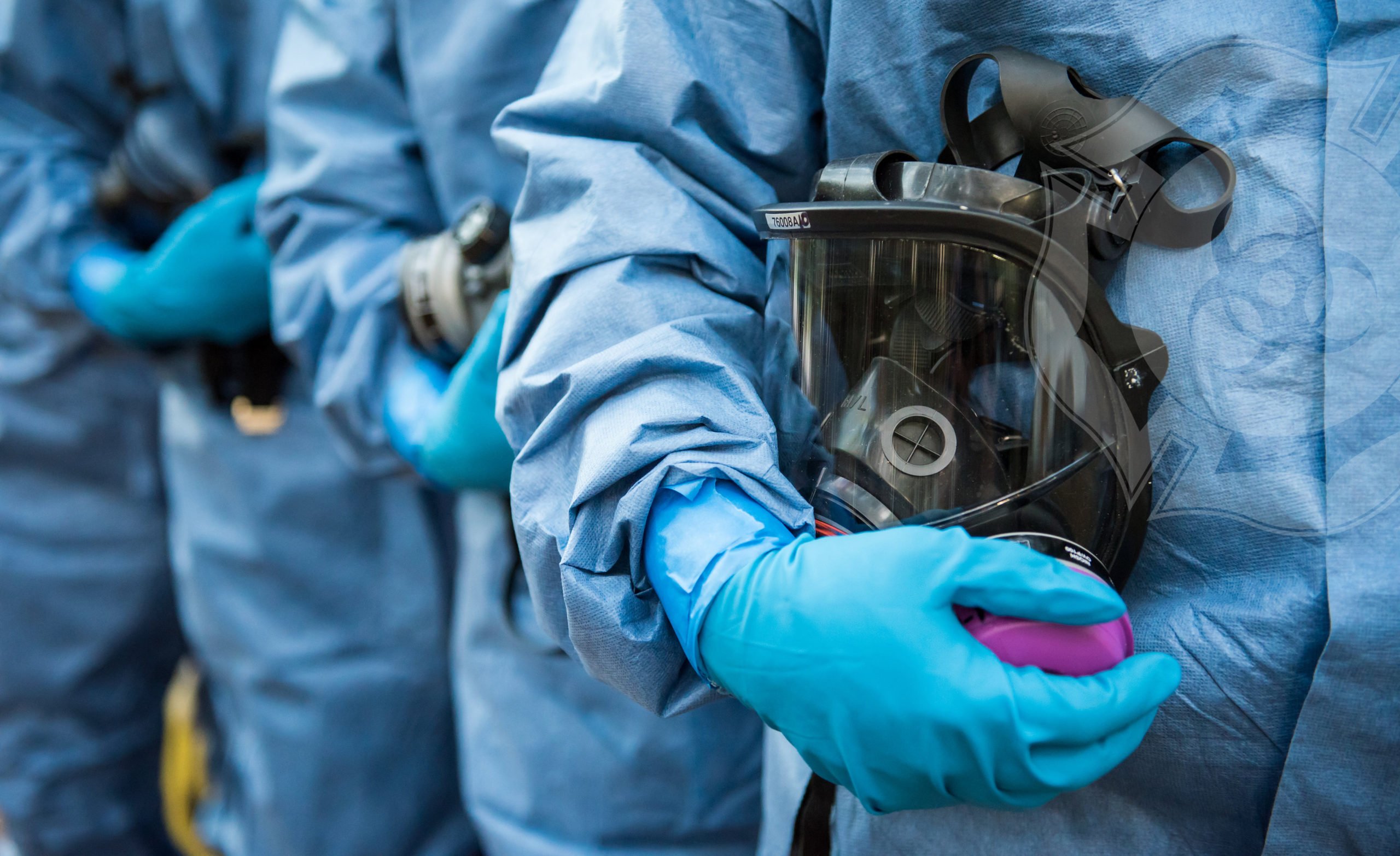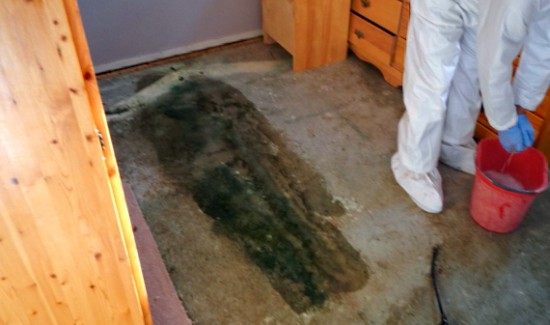Mold Remediation Providers: Safeguarding Your Building from Mold Damage
Expert Biohazard Cleaning and Decontamination for Blood, Bodily Fluids, and Hazardous Products
In the world of biohazard cleansing and decontamination for blood, physical fluids, and hazardous products, accuracy and expertise are paramount. The prospective health and wellness dangers related to exposure to biohazards highlight the vital demand for precise handling and comprehensive clean-up. Specialized training equips professionals with the understanding and abilities required to resolve these hazardous circumstances properly. Nevertheless, it is not simply regarding tidying up; the relevance of employing proper decontamination methods can not be overemphasized. As we browse the complex landscape of biohazard cleanup, recognizing the subtleties of laws, conformity, and the specialized devices at play comes to be critical in making sure a comprehensive and secure decontamination process.
Wellness Threats of Biohazard Exposure
Exposure to biohazards poses significant health dangers that can lead to extreme repercussions for areas and individuals alike. Biohazards encompass a vast array of biological materials, consisting of blood, bodily fluids, mold and mildew, bacteria, viruses, and other possibly transmittable materials. When individuals enter into contact with these biohazards, whether with mishaps, improper handling, or ecological exposure, they deal with the danger of contracting serious ailments or diseases.
Among the main health and wellness risks related to biohazard direct exposure is the transmission of transmittable diseases. Bloodborne microorganisms such as HIV, hepatitis B and C, and numerous microorganisms can be present in biohazardous products, posturing a direct risk to human wellness. Inhaling airborne biohazards like mold and mildew spores or entering contact with polluted surface areas can also bring about respiratory system issues, allergic reactions, and other damaging health results.
Additionally, biohazard exposure can have long-term health and wellness ramifications, with some conditions manifesting years after the preliminary call (Blood Cleanup). Therefore, it is essential to prioritize proper biohazard cleansing and decontamination to alleviate these health and wellness threats and make certain the security of areas and individuals

Specialized Training for Biohazard Cleanup
When it comes to dealing with biohazard cleaning effectively and securely, specialized training plays a basic duty in making certain proper decontamination procedures are followed. Biohazard cleanup calls for certain expertise and skills to effectively mitigate dangers connected with bloodborne virus, physical fluids, and unsafe products. Experts trained in biohazard cleanup undertake extensive instruction on just how to safely handle, eliminate, and dispose of biohazardous materials to stop contamination and exposure.
Specialized training for biohazard cleaning covers an array of important subjects, including appropriate personal safety tools (PPE) usage, bloodborne microorganism recognition, decontamination techniques, and contaminated materials disposal procedures. People learnt biohazard clean-up are outfitted with the needed competence to evaluate contamination degrees, identify prospective threats, and implement proper clean-up procedures in conformity with regulatory criteria.
Continual training and education and learning are vital in the area of biohazard cleanup to remain updated on the current purification modern technologies, safety protocols, and regulations. By purchasing specialized training, biohazard clean-up specialists can properly react to emergency cleanup scenarios and safeguard both public wellness and the environment.
Value of Appropriate Decontamination Techniques
Making use of proper purification methods is vital in biohazard cleaning to properly eliminate hazardous products and lessen health threats. Efficient decontamination not just ensures the removal of noticeable traces of blood, bodily liquids, and other biohazards yet also targets undetectable microorganisms that may pose serious wellness risks otherwise properly removed. By complying with stringent purification protocols, educated experts can substantially reduce the threat of exposure to hazardous microbes, infections, and bacteria that might result in infections or diseases.
Correct decontamination strategies involve the usage of specific tools and disinfectants that are especially made to reduce the effects of biohazards effectively. Detailed cleansing and disinfection of polluted locations are necessary to avoid the spread of virus and ensure a risk-free environment for occupants. Additionally, the correct disposal of biohazardous waste complying with purification procedures is important in protecting against contamination of various other surfaces or individuals.

Tools and Tools for Safe Clean-up
The correct devices and tools play a vital function in ensuring the reliable and risk-free cleaning of biohazardous materials. When handling blood, bodily fluids, or dangerous products, biohazard cleansing specialists count on specialized gear to lessen exposure dangers and thoroughly decontaminate the afflicted area. Individual safety devices (PPE) such as gloves, coveralls, safety glasses, and masks my site are vital to secure versus straight contact with potentially contagious products. Additionally, biohazard cleansing packages containing anti-bacterials, absorbing products, and biohazard bags are utilized to securely contain and dispose of infected things. Blood Cleanup.
Advanced cleansing devices like hospital-grade disinfectants, HEPA-filtered vacuums, and misting equipments are employed to sterilize surface areas and remove biohazards successfully. Specialized devices such as sharps containers and biohazard garbage disposal containers are made use of to crime scene cleanup training free safely handle sharp items and biohazardous waste materials. By using the best devices and tools, biohazard cleaning professionals can ensure a comprehensive cleaning procedure that focuses on security and minimizes health threats for both employees and passengers of the affected area.
Rules and Compliance in Biohazard Cleansing
Correct adherence to guidelines and compliance requirements is vital in biohazard cleaning to ensure the safety of both workers and the atmosphere. Federal government companies such as OSHA (Occupational Security and Health Administration) and the EPA (Epa) have actually established specific guidelines for biohazard clean-up treatments to decrease health and wellness dangers and environmental contamination. These regulations cover a variety of elements including the handling, transport, and disposal of biohazardous materials, along with the required training and protective devices required for personnel associated with the clean-up process.
Biohazard cleaning companies should stay current with these policies to guarantee that their procedures fulfill the required safety standards. Failing to abide by these policies can result in extreme repercussions, consisting of fines, lawsuit, and endangering the health and wellness of individuals and the atmosphere. By following rigid policies and compliance actions, biohazard cleansing business can effectively minimize threats and guarantee a safe and comprehensive cleanup process for all celebrations involved.
Final Thought
In verdict, biohazard cleaning and purification require specific training, correct methods, and adherence to policies. Direct exposure to blood, bodily liquids, and unsafe products postures significant wellness risks, making it crucial to utilize the ideal tools and devices for risk-free clean-up. By adhering to strict procedures and guidelines, specialists can effectively mitigate the risks related to biohazard exposure and make certain the safety of both themselves and others.
As we browse the detailed landscape of biohazard clean-up, understanding the page subtleties of policies, compliance, and the specialized devices at play ends up being essential in making sure a risk-free and comprehensive purification process. (Blood Cleanup)
When it comes to handling biohazard cleaning successfully and securely, specialized training plays a basic role in guaranteeing proper purification treatments are complied with.Utilizing proper decontamination techniques is critical in biohazard cleaning to efficiently get rid of dangerous products and decrease wellness threats. Furthermore, biohazard cleansing sets including anti-bacterials, absorbing materials, and biohazard bags are used to safely consist of and dispose of infected products.
Federal government firms such as OSHA (Occupational Security and Wellness Management) and the EPA (Environmental Defense Company) have actually established particular guidelines for biohazard cleanup procedures to decrease health and wellness dangers and ecological contamination.